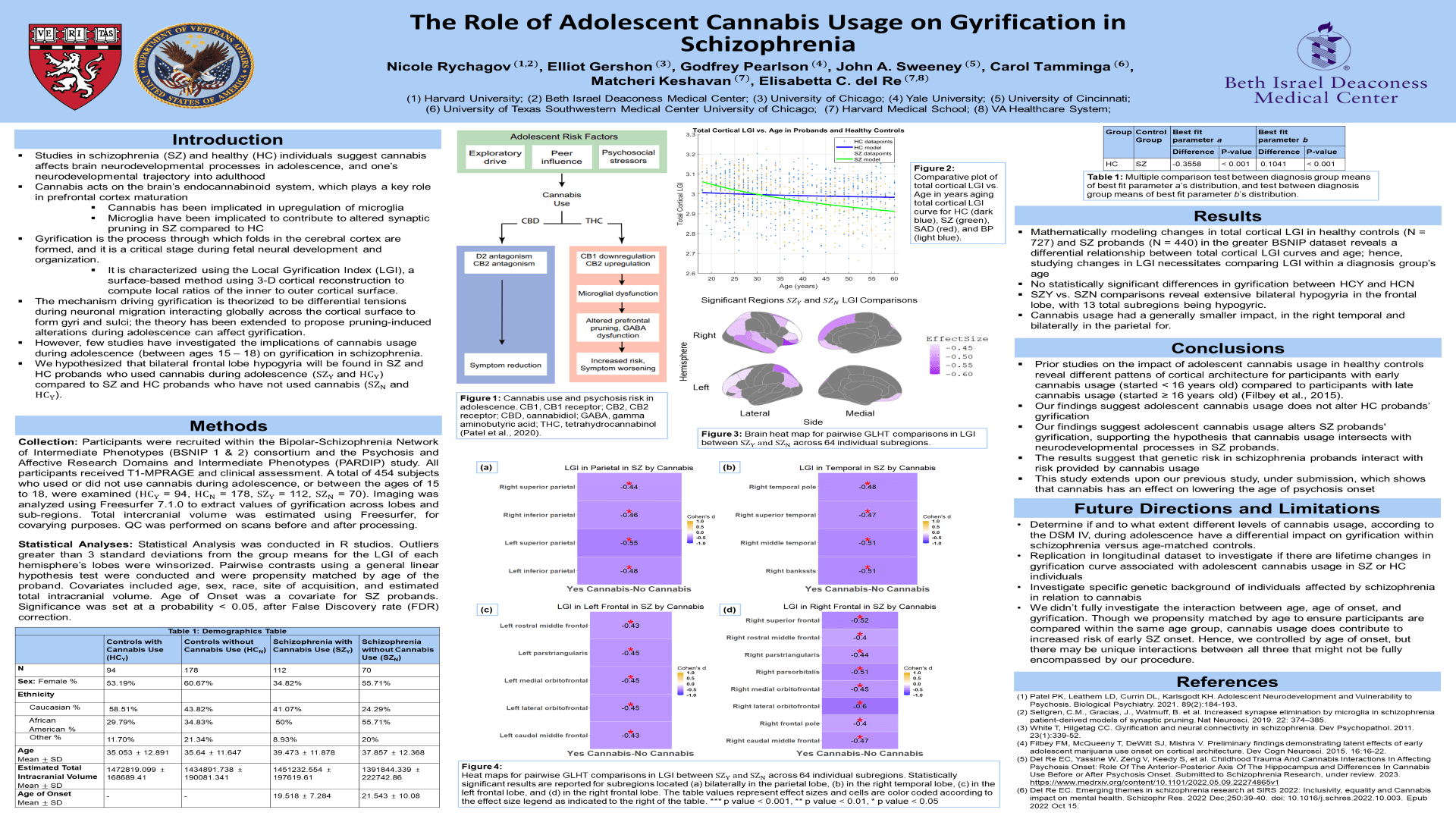Scientific Abstract
Background: Cannabis acts on the brain’s endocannabinoid system, which is involved in prefrontal cortex maturation. Cannabis upregulates microglia, and microglia contribute to altered synaptic pruning in schizophrenia (SZ) compared to healthy controls (HC). Gyrification is theorized to be formed through differential fiber tensions interacting during neuronal migration; hence, pruning-induced alterations might affect gyrification. We hypothesized that bilateral frontal lobe hypogyria will be found in SZ and HC probands who used cannabis between the ages of 15 to 18, (SZY and HCY) compared to SZ and HC probands who did not (SZN and HCN).
Methods: Participants ( ; ; ; ) were recruited within the Bipolar-Schizophrenia Network of Intermediate Phenotypes study and received MRI and clinical assessment. Gyrification was measured using Freesurfer 7.1.0 using the local gyrification index (LGI). Outliers greater than 3 standard deviations from the group mean of LGI subregions were winsorized. Pairwise general linear hypothesis tests were conducted in R. P values < 0.05 after false discovery rate correction are reported.
Results: Significant positive correlations between age and severity of subregions’ hypogyria were found in both HC (r = – 0.12 to -0.57) and SZ (r = -0.16 to -0.50) probands. Significant bilateral hypogyria in 13 subregions located in the frontal lobe was found in SZY against SZN. Significant bilateral hypogyria in SZY – SZN comparisons was identified bilaterally in the superior parietal (L: d= -0.55; R: d= -0.44) and inferior parietal (L: d= -0.48; R: d= -0.46). Hypogyria in the right banks of the superior temporal sulcus (d= -0.51), right superior temporal (d= -0.47), right middle temporal (d= -0.51), and right temporal pole (d= -0.48) for SZY -SZN comparisons was identified. No statistically significant differences were found between HCY and HCN.
Conclusion: Our findings suggest cannabis usage during adolescence alters SZ probands’ gyrification, supporting the hypothesis that cannabis usage intersects with neurodevelopmental processes in SZ probands and contributes to hypogyria in the frontal, parietal, and temporal lobes for SZY.
Search posters

